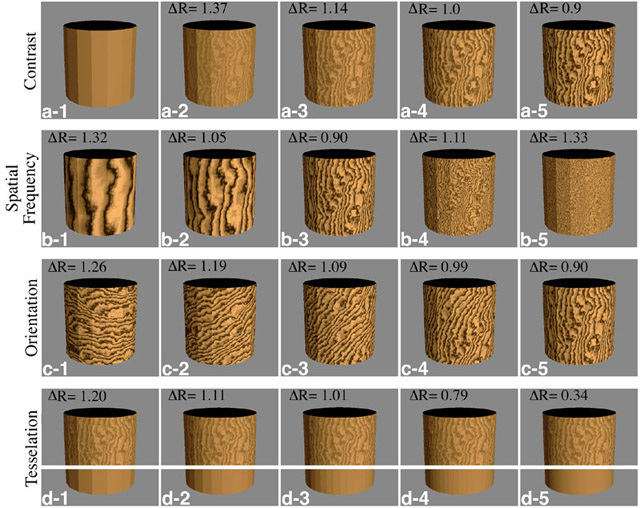|
|
[FPSG97]
Cornell University Program of Computer Graphics |
|
||||
A model of visual masking for computer graphics.James A. Ferwerda, Sumanta N. Pattanaik, Peter Shirley, and Donald P. Greenberg.In Turner Whitted, editor, SIGGRAPH 97 Conference Proceedings, Annual Conference Series, pages 143--152. ACM SIGGRAPH, Addison Wesley, August 1997. In this paper we develop a computational model of visual masking based on psychophysical data. The model predicts how the presence of one visual pattern affects the detectability of another. The model allows us to choose texture patterns for computer graphics images that hide the effects of faceting, banding, aliasing, noise and other visual artifacts produced by sources of error in graphics algorithms. We demonstrate the utility of the model by choosing a texture pattern to mask faceting artifacts caused by polygonal tesselation of a at-shaded curved surface. The model predicts how changes in the contrast, spatial frequency, and orientation of the texture pattern, or changes in the tesselation of the surface will alter the masking effect. The model is general and has uses in geometric modeling, realistic image synthesis, scientific visualization, image compression, and image-based rendering.
This paper is available as a PDF file FPSG97.pdf (1.2M).
| ||||||
| ||||||
